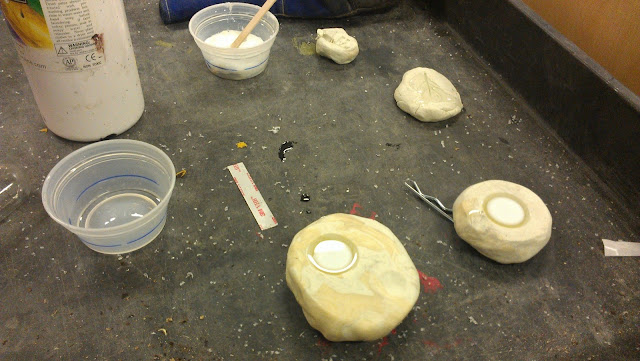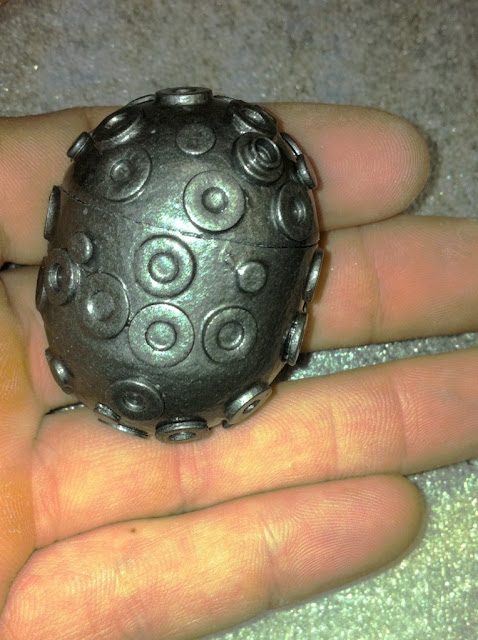The model of the Zeiss and the StarBay have been progressing and it has been very exciting to see the details emerge from raw materials.The model will actually be
produced through casting. To cast, a
mold will be made from a positive (kind of like a very polished rough draft of
the final product). When the mold is
made, the casting product (plastic, bronze, etc.) can be poured in to create
the final product. This update will take you through creating a lot of the positive that will create the mold in which the final product, our "Mini Zeiss" tactile, will be produced.
 |
| Testing out some material to create the Zeiss Planet Projectors |
 |
| Practice Foam Planet Projectors sitting in the mock up of the StarBay |
Of course trying to get things looking perfect takes a bit of time and a lot of effort!
 |
| First attempt at creating the starball with accurate lenses |
A few different Zeiss positives have been made now until the right size that will be durable enough emerged.
 |
| Different scales of foam planet projectors |
Third time's a charm though and now we have the right scale. Next up was the creation of a Starball that was the right size...
 |
| Molding the sides of the Starball |
 |
| The sides of the Starball are complete! |
 |
| Creating the center of the Starball on the lathe |
 |
| Making the base for the Starball on the drill press |
We want it to be as accurate as possible, so checking it against the real thing now and then never hurts!
 |
| The Mini Zeiss positive meets the real Zeiss |
 |
The Mini Zeiss's Starball positive gets some lenses and a coat of Hammerite
|
Once again I'd like to give a special thank you to Ian for all his hard work. When I first thought of this model, I had no idea how much time and effort would be involved but he has truly brought the small version of the Zeiss to life and it's not even finished yet!












